How to achieve the bedroom design of your dreams
Don't leave your bedroom design as an afterthought – this is one room of the house that needs special attention if it is to feel both relaxing in the evening and invigorating in the morning. Our top expert advice explains how to create a room you can't wait to spend time in
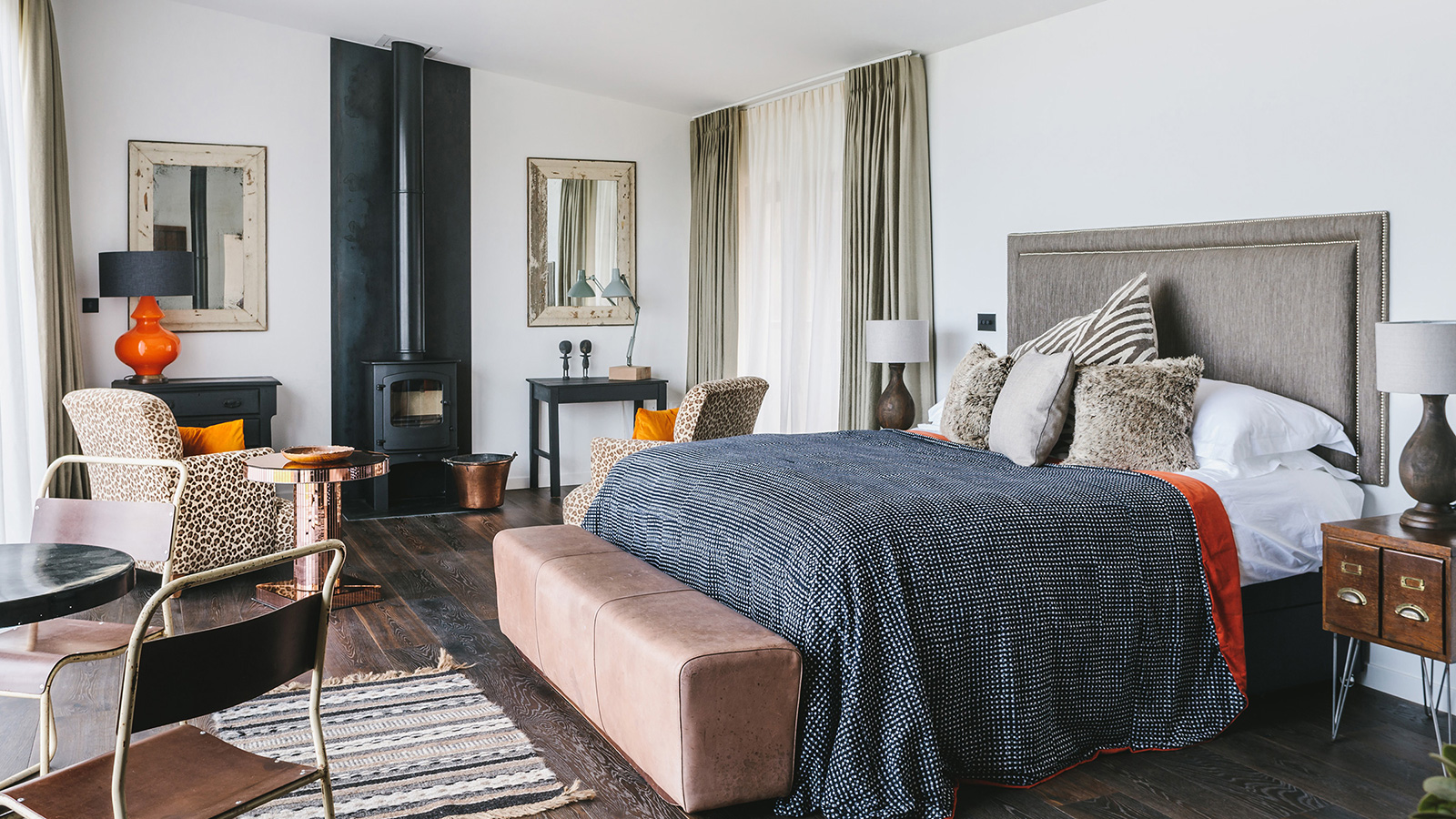
Bedroom design can often get a little left out by homeowners, keen to place emphasis on the more public-facing rooms of the house, such as the living room, kitchen and even hallway.
At the end of the day, the bedroom design you opt for, particularly when it comes to your master bedroom ideas, are going to have a massive effect on your day-to-day life. This is the room you wake in, get ready to face the day in, retreat to for a little peace and quiet and then spend time winding down in before snuggling up for what will hopefully be a fully restorative night's sleep.
In this guide to bedroom design we cover all the essentials, taking you through the main points to consider in order to end up with the bedroom you always hoped for, with help from the experts along the way.
Start with a moodboard
Just as with any other room in the house, knowing how you want your bedroom to work, look and feel before getting started is key to success.
One of the best places to start creating your bedroom ideas is with a list. You should note down how you expect to use your new bedroom. It might sound silly, but as well as a space in which to sleep, a bedroom is often where you will get dressed and ready for the day ahead, as well as preparing for rest and bedtime at the end of the day. In addition, some people use their bedrooms as extra work-from-home spaces. You might need the room to store items – clothing, shoes, books, bedding and so on. Or perhaps you need to take into account nightly visits from your children and need a spot for them to sleep too – you might also like to take the time to develop a few new children's bedroom ideas to coax them back to their own spaces.
Once you have a solid list of how your bedroom needs to work, you can work on a moodboard. A moodboard can be physical, with notes, sketches, cut outs from magazines, paint and fabric swatches and so on, or virtual, created using Pintrest or similar.
The key is to use your moodboard to display the ideas, textures and colours you want to feature in your room. When finished you should be able to stand back and get a clear idea of what you need to do to turn your ideas into a reality.
Bring your dream home to life with expert advice, how to guides and design inspiration. Sign up for our newsletter and get two free tickets to a Homebuilding & Renovating Show near you.
If there is one room that should really be a reflection of your personality, it has to be the bedroom – this is your space.
Include ideas and colours that really make you feel good – and try to include lots of personal objects that bring happiness, such as items brought back from your travels, or gifts from loved ones.
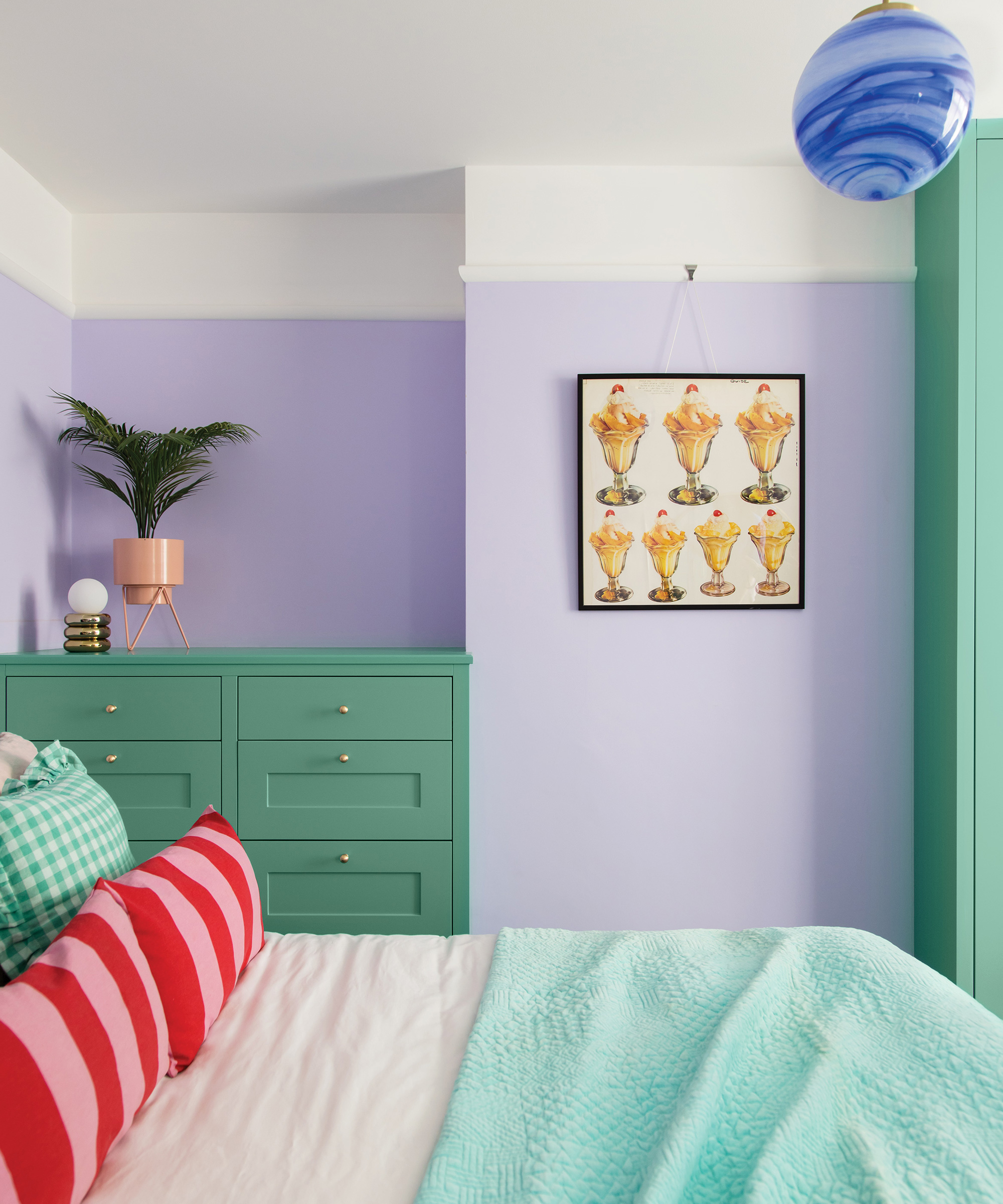
Choose a colour scheme that you love
Whether it is neutral bedroom ideas that float your boat or you are drawn to something a little more daring and dramatic, the colour scheme you choose for your bedroom needs to be carefully considered in order to create a space you feel comfortable and relaxed in.
"When selecting a restful colour scheme for your bedroom, it's important to consider soothing tones that evoke a sense of tranquillity. Start by choosing a neutral base colour like soft beige or warm grey to create a calm atmosphere," suggests Adam Brown, director at The Painted Furniture Company.
You can then build on this soothing background with any bolder colours you like, as well as adding texture in the form of fabrics and areas of wall panelling.
Your colour scheme need not be muted though, some people will prefer to use a colour palette that really expresses their personality or that perhaps help define the various areas of their bedroom.
"Using paint to zone areas of a bedroom creates the illusion of a bigger space whilst simultaneously injecting it with character," advises Bailey Oates, colour expert at Earthborn. "One way to do this is to use a bright, bold colour to create a striking wardrobe section that appears separate to the sleeping area. Additionally, painting features in varying colours will add a creative flair – this can range from skirting boards to a feature wall or even a mural."
Colours that tend to work particularly well in bedrooms include:
- Soft and blush pinks: Pink is a shade that does an excellent job of soothing the soul, at the same time as feeling romantic and a little glamorous.
- Forest greens: Green is a peaceful shade, that helps us feel connected to nature. It is also restorative – perfect for those mornings when getting out of bed is a struggle.
- Warmer greys: Soft powdery grey is a very restful, calm shade, while stormy hues feel cocooning and cosy.
- Navy blue: Rich midnight blue is great for calming the mind and invoking a sense of harmony.
Of course the colours you opt for need to be those you love being around so make sure you personalise the space. Many of the suggested colours above also work very well together.
While we're on the subject of colour, do consider the recent trend of colour drenching – it could just work really well in your bedroom.
"Colour drenching can provide a cohesive look by layering different tones of a single hue," says Sally Denyer, digital marketing manager at Shutterly Fabulous. "Whether you opt for a vibrant colour like navy, or a neutral shade of grey, colour drenching offers a streamlined and visually appealing aesthetic that will tie the entire room together perfectly. The consistency in colour also creates a sense of visual harmony and will suit any room, whether it’s a bedroom, bathroom or living room.”

With a passion for all things creative, colour expert Bailey Oates brings a wealth of expertise to the eco-friendly paint company Earthborn. Specialising in interior design and photography, Bailey has been an integral part of the Earthborn marketing team for over three years, where she is responsible for creating blog inspiration, marketing materials, and stunning visuals. Holding a BA Hons in Spatial Design from Liverpool John Moore's University, Bailey's keen eye for colour and design shines through in everything she does.
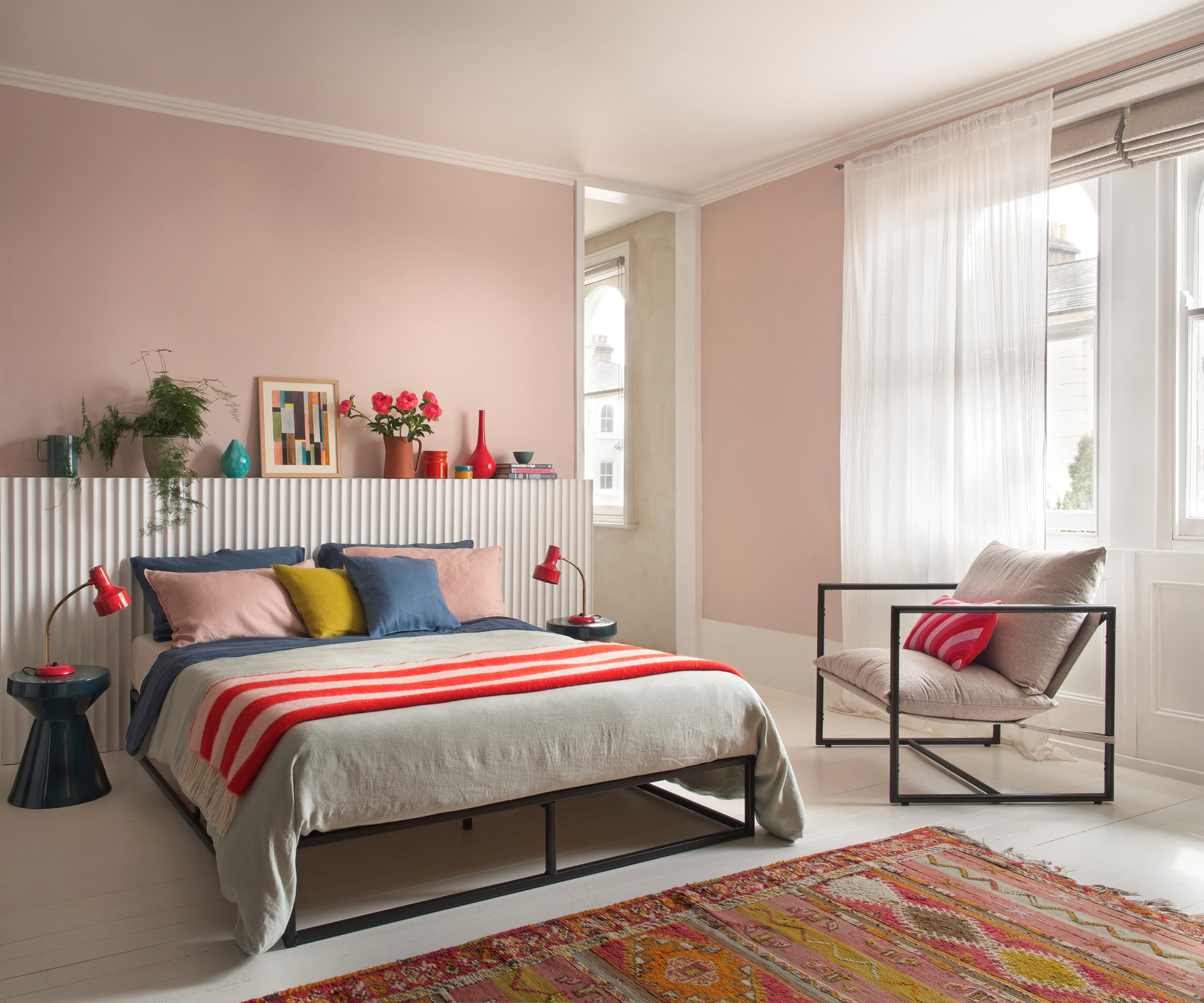
Planning your bedroom layout
Your bedroom layout ideas are really important, not only to ensure that you are making the best use of the space you have available, but also because they can affect everything from how much natural light can enter the room to helping promote a sense of wellbeing.
"Paying attention to Feng shui bedroom layout principles can promote better sleep patterns and overall wellness," says Stephany Aubrey, brand specialist at Zinus.
Avoiding placing the bed underneath any windows, creating balance with symmetrical items such as bedside tables and making sure your bed isn't in line with any doors or mirrors are all considered good practice in terms of feng shui.
"Feng shui practices offer varying perspectives on the role of mirrors in the bedroom," says Stephany. "Some suggest avoiding them altogether, while others recommend positioning them away from the bed. This advice is rooted in the notion that mirrors have the power to reflect and intensify both positive and negative energy, potentially interfering with sleep quality.
"To add a mirror to your bedroom, consider placing it facing the window to encourage the natural light, which can then be adjusted with curtains if necessary. Avoid placing the mirror at bed level by hanging it above drawers. Alternatively, those wanting a full-length mirror without it being prominently displayed, should try positioning it inside a wardrobe.”
"Pay attention to the bed’s surroundings – enhancing the beauty of your bed is not just about the bed itself but also about creating a visually cohesive environment around it," continues Stephany. "Carefully selected side tables and an accent chair will help to ground the bed, making the space feel intentional.”
"If possible, position taller furniture away from windows to maximise the natural light entering the room," suggests Adam Brown. "Choose chests of drawers that complement the overall design aesthetic while providing sufficient storage for clothing and personal items.
"Ensure the height and width of the chest are proportionate to the room size," further advises Adam. "Bespoke pieces are worth the investment, a low wardrobe to fit sloping ceilings or a chest of drawers built to fit an alcove, for example, will help make the most of your available space."


Brand specialist at Zinus, Stephany is perfectly placed to offer style tips and advice on all things sleep. From bed frames to mattresses and stylish accent chairs, Zinus' aim is to bring happiness into a home.
Choosing bedroom furniture
A large part of bedroom design comes down to the furniture you choose to kit the space out with. While a bed is a given, you should also think about the best pieces to store clothes and other items, as well as whether you have space for handy extras such as dressing tables, shelving and even an armchair, chaise longue or sofa. You want the space to feel uncluttered and calm so make good storage a priority – particularly if you are looking for small bedroom ideas.
"Bedrooms need to be the most comfortable room in our lives," says Juliette Thomas, founder and creative director of Juliettes Interiors. So create the mood you want, and think about lighting and the size of the bed that works for you. Don't clutter. Your mind needs to rest. It's definitely a less is more design style."
"Your bedroom is your personal sanctuary, and your bed takes centre stage within it. Choosing a beautiful bed not only adds aesthetic appeal to your space but also enhances the quality of your sleep," says Stephany Aubrey.
"One of the quickest and most effective ways to enhance the look of your bedroom is to invest in a stylish bed, paying close attention to the headboard. Whether it's a classic wooden design, an elegant, upholstered piece, or even a creative DIY project, a well-chosen headboard sets the tone for the rest of the room."
Bedside tables are another bedroom must-have, whether in the form or a simple table or stool, a small cupboard or just a floating shelf.
“When designing a bedroom to promote a good night's sleep, a practical bedside table that will keep both your space and mind clutter-free is essential," says Becca Stern, creative director and co-founder of Mustard Made. "The bedside is one of the first and last things you see, so keeping this space neatly organised is really important. Opting for cupboard storage such as a bedside locker, means you can easily shut away all your bedside essentials, phones and other electrical devices to prevent a disrupted sleep.”
It is entirely up to you whether you choose freestanding wardrobes or take the fitted route with your bedroom storage ideas. Freestanding pieces help create a laid-back feel and can easily be moved around if required. However, in the case of bedroom loft conversion ideas or awkward spaces, buying built-in storage can work better as it can be tailored to make the most of your space.
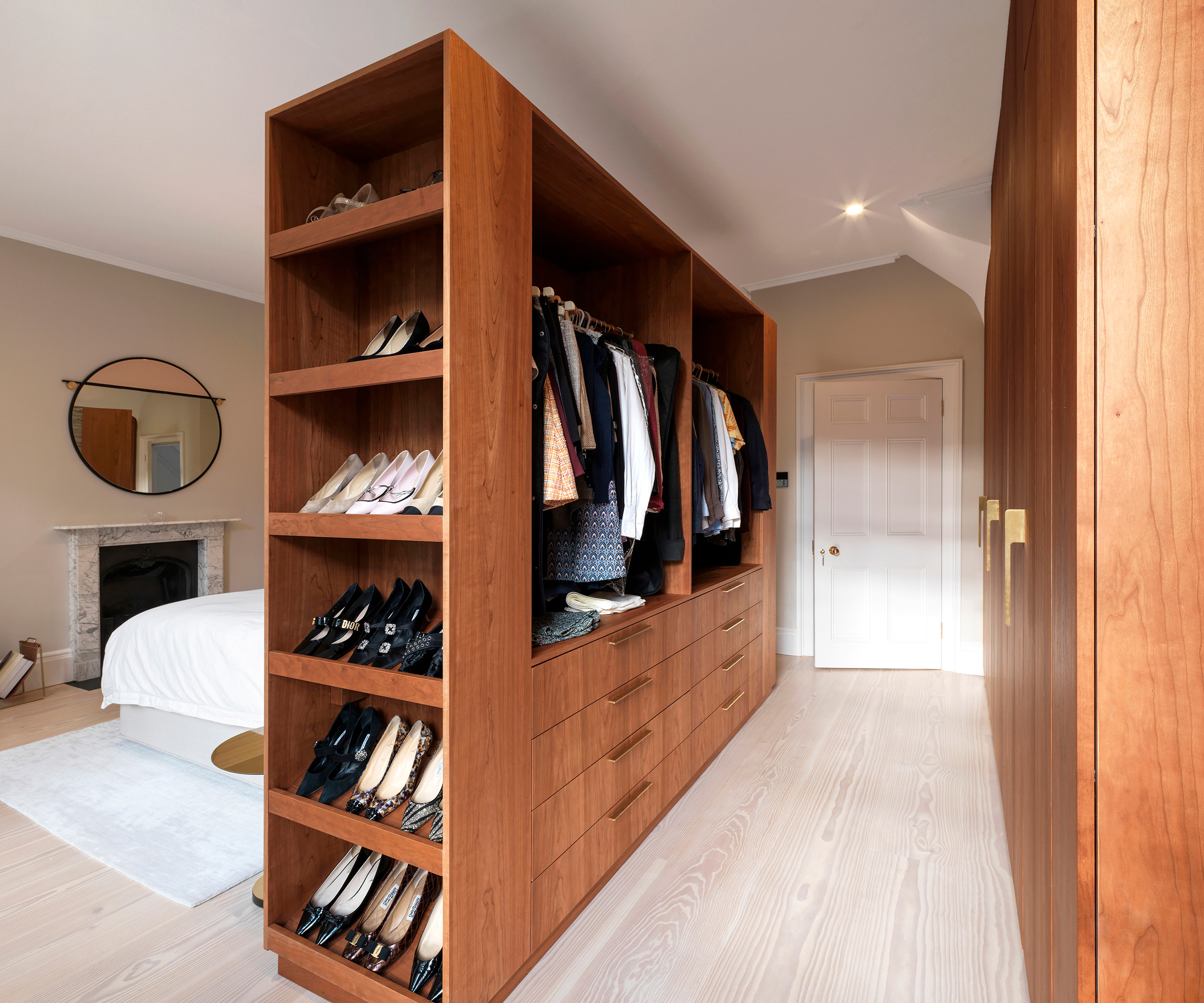
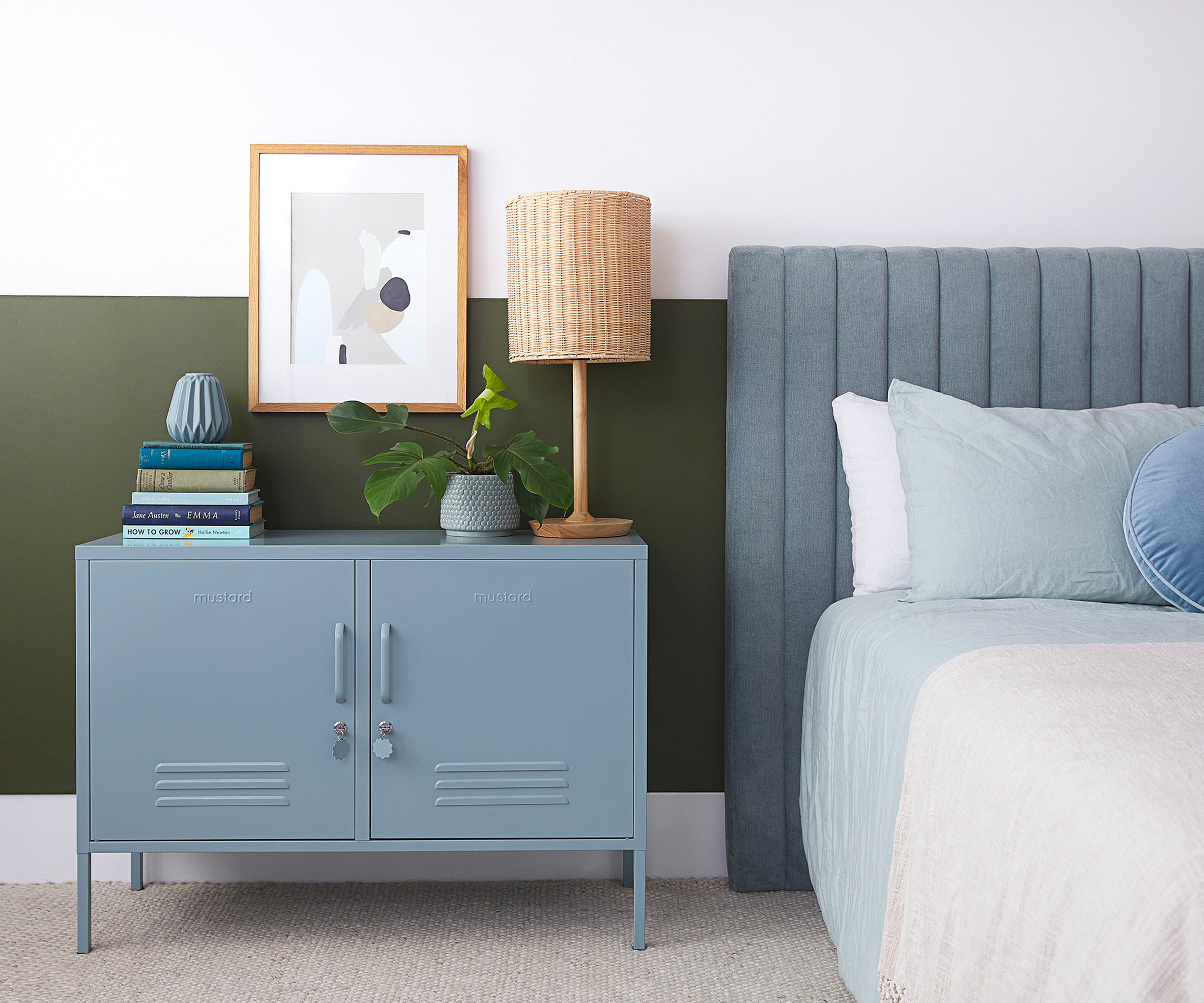

Becca is creative director and co-founder of Mustard Made, along with sister Jess. Mustard Made specialises in metal lockers in all kinds of styles and colours and is the result of the sisters' meticulous research into creating perfect products.
Make sure the space feels nice and private
While it is lovely to have a bedroom that enjoys plenty of natural daylight, this is also a space that needs to feel private. For this reason it is important to factor in window treatments that will allow for both light and privacy – just as is the case with bathroom design.
"When it comes to bedroom window dressing, if you have space either side of your window, then full-length curtains will create a cosy, comfortable and inviting feel," says Debbie Leigh, design manager at ILIV. "Not only do they provide complete privacy, choosing a quality thick fabric will also provide an extra layer of insulation, as well as creating a sense of luxury.
"For more compact rooms and smaller windows, Roman blinds are a good option as they take up less space and can be more cost-effective, as they use less fabric. They are also flexible, allowing varying amounts of light into the room."
However, curtains and blinds are not your only option – there are other stylish ways to approach your window dressings.
“Softening your bedroom window doesn’t always require the lengthy and often costly task of new curtains and blinds," points out Joanna Baumard, co-founder of Purlfrost. "A window film could be exactly what you’re after; great for adding extra privacy or blocking out an unsightly view, without blocking out the natural light. Available in an array of frosted or patterned designs, window films create a soft and ambient glow as the sunlight streams through, making them ideal for the bedroom.”
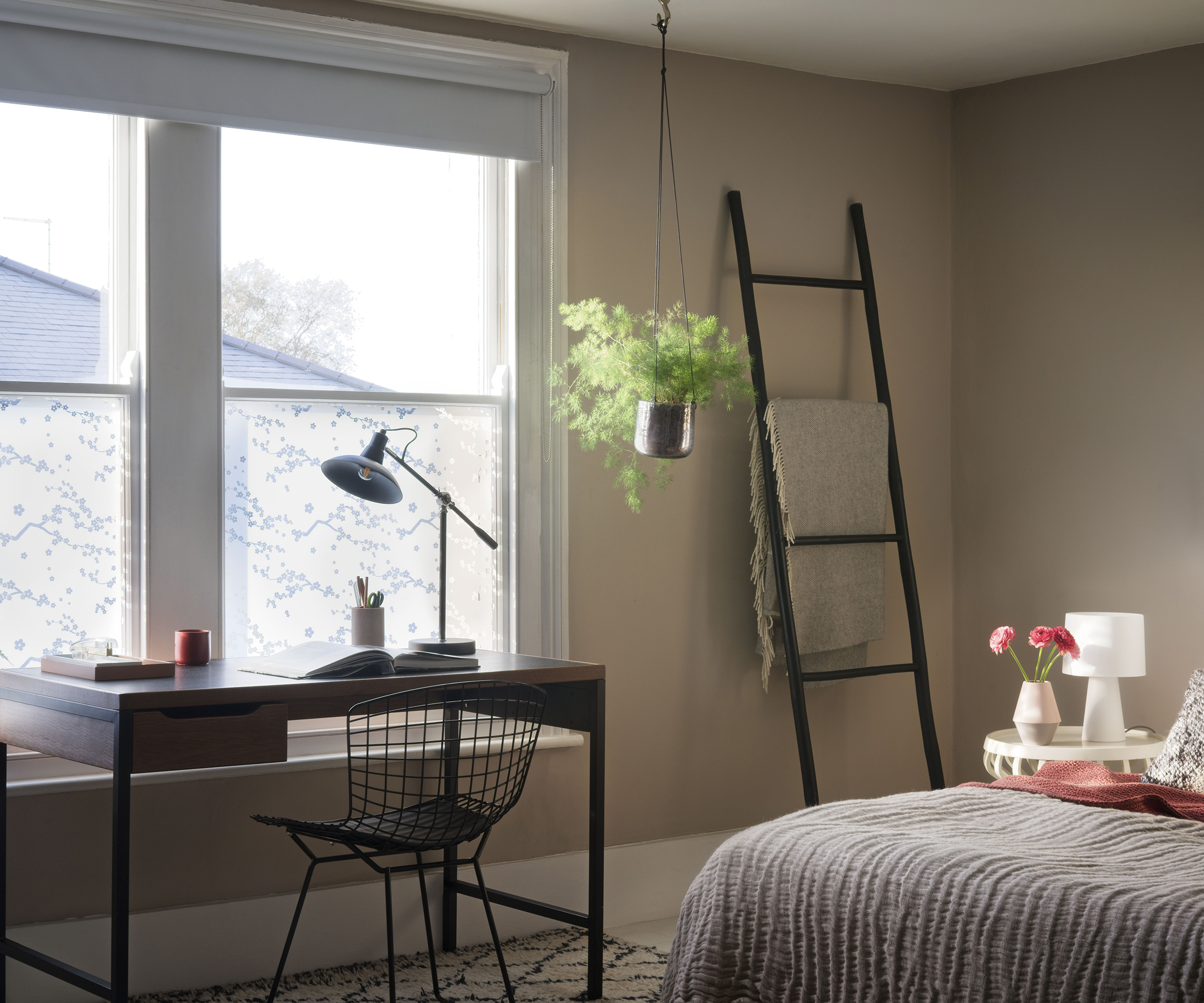
Wooden shutters are another brilliant option that really add to the overall décor of a space, lending them a fresh, New England feel.
"DIY plantation shutters are a great way to instantly elevate a bedroom’s design style," says Sam Tamlyn, managing director at California Shutters. "Equally beautiful open or closed, homeowners can select the style of shutters based on their needs, from lighting control to privacy and style. Shutters are an excellent window treatment option for any room as they take up minimum space – unlike curtains which can use up space underneath the window. Shutters are fitted flush to the window and are always bespoke, leaving plenty of room underneath the window for other furniture."
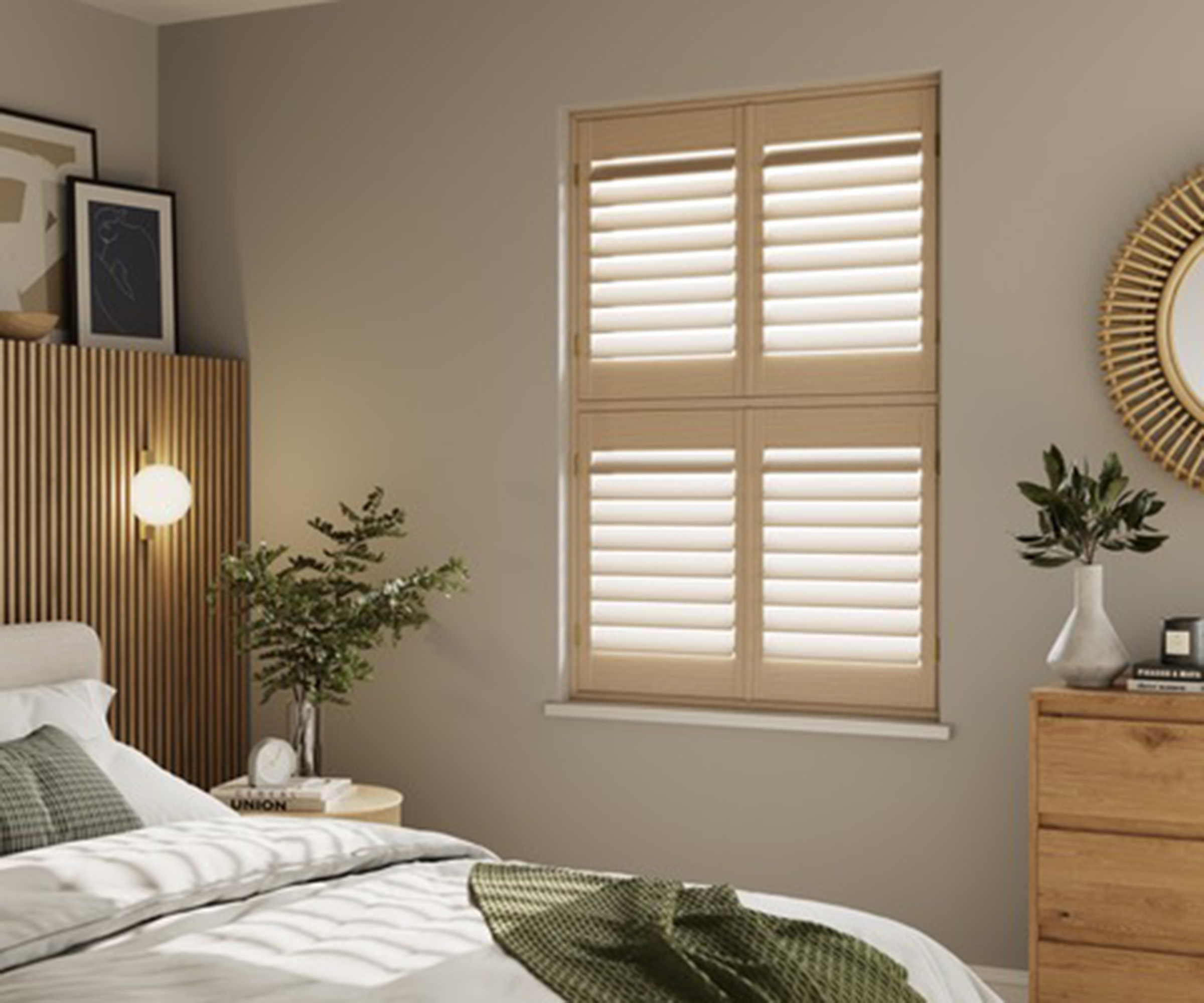
Layer up your bedroom lighting scheme
When it comes to bedroom lighting ideas, you should always take a layered approach – that is combining several different light sources to provide various kinds of light.
"Lighting should never be an afterthought," says Juliette Thomas. "It is an integral part of any well-planned bedroom design. Plan for layers of light for different purposes and moods. You will need a minimum of a ceiling light, bedside lamps and floor lamps.
"Every bedside table and dressing table should have a luxury table lamp," suggests Juliette. "If you have a dressing area, it requires a good, bright light. Ceiling lights should be bright enough to light up a central area without being too stark. Then use luxury floor lamps to illuminate the areas in between. Your aim should be to create warmth and ambience but with spots of brighter, task lighting."
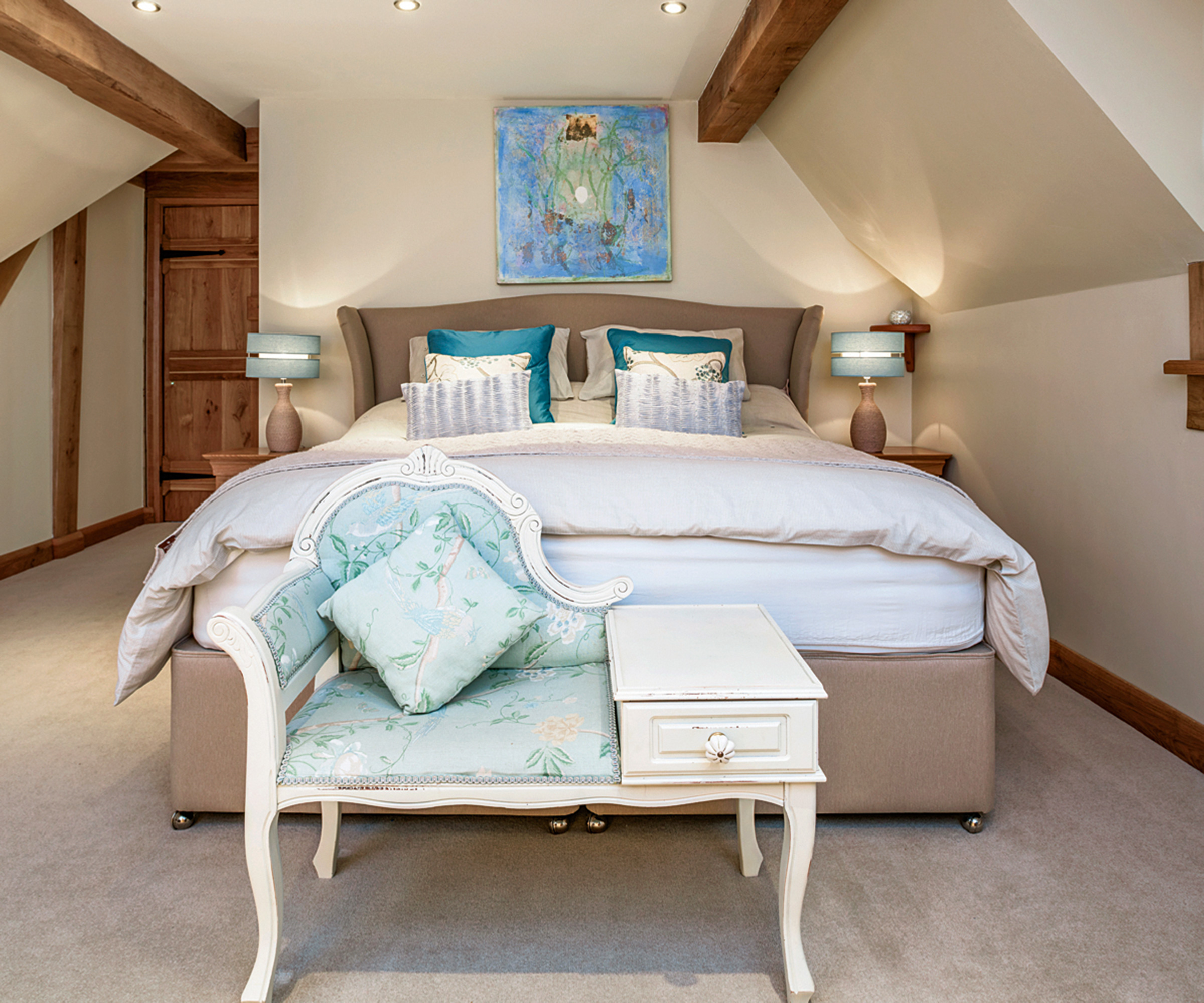

Juliette Thomas is the founder and creative director of the London-based interior design and luxury furniture retail company, Juliettes Interiors. Juliette has been designing and offering unique exclusive interiors and furnishings since 2005.
Choose your bedroom flooring based on comfort and style
It really is worth giving some thought to your bedroom flooring ideas rather than just continuing whatever flooring you have chosen for your landing into the room. This is because bedroom flooring not only needs to look great, but also has to add a visual warmth at the same time as feeling nice and comfy underfoot.
Carpet is a popular choice in bedrooms – for good reason. Soft and warm underfoot, great at locking in heat and available in a huge range of colours and patterns.
"Over the last year, we’ve seen the return of wall-to-wall carpet as a key interiors trend and this is set to continue throughout 2024," advises Carly Greening, creative product manager at The Floor Room. "The return of carpet is timely – whilst the cost of energy is spiralling, carpet can play a big role in cutting energy bills. Due to the insulating effect of carpet, 15% less heat is lost through the floor which means you can turn the central heating thermostat down by a few notches.
"For maximum warmth, choose a 100% wool carpet with a deep pile which will feel especially luxurious underfoot and will provide a comfortable transition from the cosiness of the bed to the floor. To reduce heating costs even further and for additional warmth, choose a carpet with underlay.”
Don't underestimate the effect the colour and pattern of your flooring can have either.
"When choosing a pattern, consider if making a statement is important or if a subtle, understated design is better suited to your interior style," says Kirsty Barton, brand storytelling manager at Alternative Flooring. "Smart stripes, in any width, are a brilliant way to make a bedroom feel wider or longer, depending on which way the stripes are laid. Or, for a modern look, geometrics can also look fabulous, but keep the colours subtle to avoid it looking too busy.
"Softer patterns and colours are great for making a room feel larger whilst complementing various design schemes," continues Kirsty. "Choosing light, airy carpet shades that suit most colour palettes is also a smart choice, especially if other elements within the bedroom are the main focus. However, if you’re starting your design from the floor up, consider opting for a colourful wall-to-wall carpet to create the perfect base for the rest of your bedroom design.
"There is no need to be afraid of the dark when it comes to your bedroom. If creating a tranquil haven is your goal, using darker tones can help a larger room feel cosy, adding a sense of allure and luxury.”
Of course carpet isn't your only option – a beautiful wooden floor can look lovely in bedrooms, with the warmth of wood adding character and charm. Laying squashy rugs beside the bed mean you can still enjoy putting your feet down onto something soft when you get out of bed.


Kirsty is brand storytelling manager at Alternative Flooring. She has almost 20 years working in the carpet industry and roles within alternative flooring ranging from sales, customer services to purchasing.
Don't let a small bedroom stand in the way of designing the bedroom of your dreams – a tranquil, uncluttered space can be achieved no matter what size your room is, whether you are working on guest bedroom ideas or a master suite.
“In bedrooms, and in smaller bedrooms in particular, I’d always advise opting for sweeping silhouettes rather than angular shapes as these can make a room feel boxy," says Georgia Metcalfe, founder and creative director at French Bedroom. "Instead, choose furniture with gentle edges and curves which will bring a softening touch and will help guide the eye around your room effortlessly.
"Gentle curves also promote a sense of comfort which is perfect for creating the welcoming and relaxed atmosphere we all long for in our bedrooms. Choose your colours wisely too – lighter woods and finishes are generally better for smaller spaces as they feel less imposing, especially when it comes to larger pieces of furniture like beds and wardrobes. Lighter colours will also reflect the light and help to keep your room feeling bright and airy.”

Natasha was Homebuilding & Renovating’s Associate Content Editor and was a member of the Homebuilding team for over two decades. In her role on Homebuilding & Renovating she imparted her knowledge on a wide range of renovation topics, from window condensation to renovating bathrooms, to removing walls and adding an extension. She continues to write for Homebuilding on these topics, and more. An experienced journalist and renovation expert, she also writes for a number of other homes titles, including Homes & Gardens and Ideal Homes. Over the years Natasha has renovated and carried out a side extension to a Victorian terrace. She is currently living in the rural Edwardian cottage she renovated and extended on a largely DIY basis, living on site for the duration of the project.

